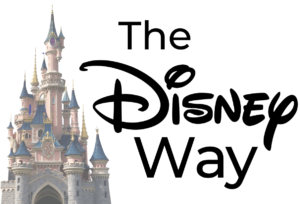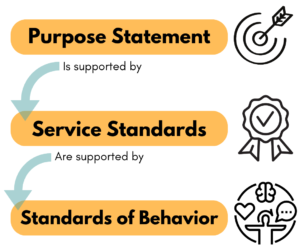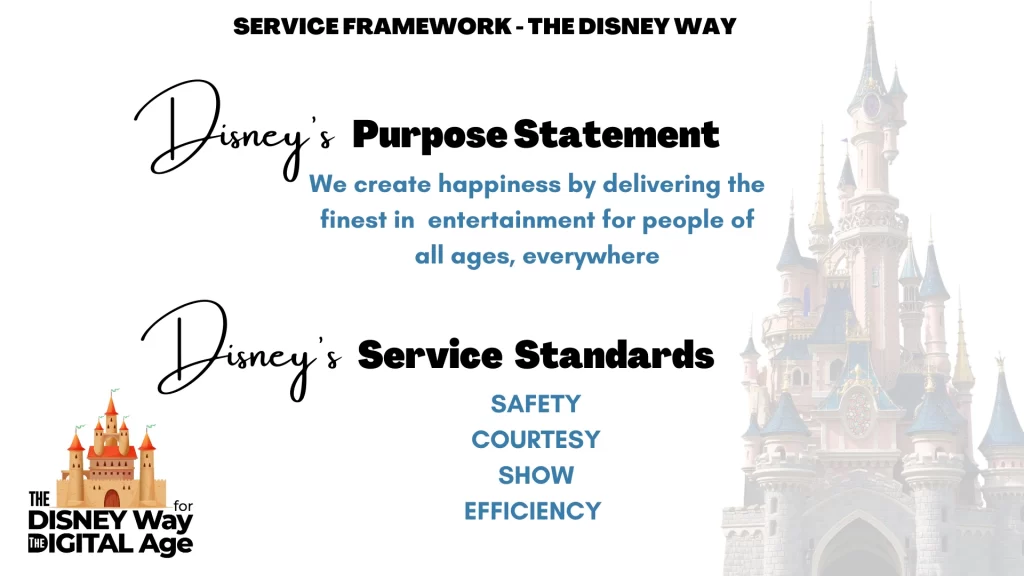With the advent of ChatGPT (Generative Pre-trained Transformer), the general population is realizing that AI can and will change people’s lives. The concept of AI as applied to business has been on large corporation’s radar for several years. As various AI services, such as chatbots, have been incorporated into the public customer service and communication systems, acceptance of AI by the public sector as a means to resolve customer issues, complaints, or answer customers’ questions is growing in popularity. In fact, recent studies have shown that 71% of people prefer a self-service method for resolving issues with providers.
All of this is great news for companies struggling to create competitive advantage through service in a very tough market place and an unprecedented labor shortage that is not likely to improve for many years. While this may seem like an easy solution for many companies, due diligence is necessary to ensure that the AI process lives up to users’ expectations. Customers’ expectations for personalized and exceptional service from their providers does not change, regardless if the service is provided by a Chatbot or a live person. Creating an inefficient AI service can be as catastrophic as hiring wrong-fit employees. Additional considerations must be given to ensure that the chosen AI methods are programmed and built with well thought-out structural and ethical guidelines or the end result will be customer defection rather than loyalty.
The concept of combining AI and pixie dust was one invented by myself and partner, Debbie Zmorenski. Debbie is a 35 year veteran of Disney and my co-host on the podcast The Disney Way For the Digital Age. On the podcast, we explore the intersection of digital innovation, combined with the cultural structure developed by Disney that pulled them out of the dark years prior to Michael Eisnors tenure as CEO. This structure is most well known as “The Disney Way” and is still taught today at the Disney institute where Debbie and I originally met.
In 2018 at the SXSW conference, Debbie and I were joined by Clara deSoto, currently part of the Google Digital Assistant team, on a panel exploring the ideas of combining a service culture framework with ethical AI design. This concept explored the idea of using AI to create happiness as a foundational goal through AI technology like Chatbots and Alexa voice experiences. This is still the foundation for Debbie’s and my work at Live Smart Ai where we design AI that provides exceptional service to hotel guests as well as an innovative system to assist seniors who are isolated in their homes.

At its simplest, the idea of “The Disney Way” is that everything you do tiers up to and supports your Purpose Statement, of which Disney’s is “We create happiness by providing the best in entertainment for people of all ages everywhere”. Or as all employees are required to remember, simply, “WE CREATE HAPPINESS”. But how do you do this consistently through a delivery method of 75,000 free-willed cast members at Walt Disney World? Enter their cultural structure, consisting of Purpose statements, Service Standards, and Standards of Behavior commonly referred to as the Service Framework.

The Purpose statement, that singular simple goal is supported by the Standards of Service. The Service standards are 3 – 5 words providing criteria for delivering Service Excellence. When prioritized and clearly defined, Standards of Service act as tools empowering employees to make appropriate and relevant decisions that deliver consistently on Service Excellence. Standards of Service must always support and deliver on the Statement of Purpose. But what does that look like and how do we train the team and keep them accountable? Those Service Standards are supported by The Standards of Behavior. Behaviors associated with Standards of Service that clearly describe the expected and non-negotiable behaviors to enable consistent delivery on a customer-centric culture, creating sustainable competitive advantage.
Clearly delineated behaviors associated with Standards of Service eliminate interpretation of service excellence actions, creating accountability that is observable and measurable. For example, see Disney’s purpose statement and service standards below:

We believe that this can be applied to the design and management of AI. We can apply this hierarchical structure when designing AI like Chatbots, or Voice Experiences, but we will need to create the bots unique purpose statement, service standards and standards of behavior, and apply that throughout the design process and like people, use it to keep it accountable and measure its success as it grows in scope of intelligence and autonomy.
Pixie dust is a term often associated with the Disney way of creating magic and wonder. It represents the belief that anything is possible and that dreams can come true through hard work, determination, and a little bit of magic. In the context of Disney, pixie dust refers to the unique combination of elements – such as storytelling, music, and technology – that come together to create memorable experiences for guests. The term pixie dust originates from the animated film Peter Pan.
Of course, it’s important to remember that AI is not a magic solution to all problems. While it has the potential to play an important role in creating happiness, it’s only one piece of the puzzle and we can never discount the need for human interaction.
AI is built on input and guidelines from humans, and we can employ foundational guidelines like the Disney Way Service Structure that allows providers to deliver consistent service excellence through their human employees. It begs the question, “Why can’t we use that foundational structure to make Chatbots, voice experiences and other AI interactions that will deliver happiness across a broad spectrum of human needs.” You can have a look at the SXSW panel discussion HERE.
AI has the potential to be a powerful tool in the quest for happiness. From virtual assistants and AI-powered mental health tools to virtual reality experiences and pixie dust, AI is providing us with new and innovative ways to manage our emotions, meet our needs, and improve our well-being. As we continue to explore the possibilities of AI, it will be exciting to see how it continues to impact our lives and help us create happiness.
You can share your thoughts in the comments below or reach out to Debbie, Kevin and Clara in case you wish to have a further conversation regarding the same.
Author Bios:
 Kevin Kelly is a 30-year veteran of the interactive marketing and creative advertising space, with expertise in customer experience design and interactive creative strategy. Passionate about AI and Machine Learning, Kevin serves as Chief Experience Officer (CXO) at Live Smart Ai where he designs innovative customer experiences through AI digital assistants as well as training for the human support team. He has spoken at CES on Ethics in AI and at SXSW on concepts combining AI and cultural frameworks.
Kevin Kelly is a 30-year veteran of the interactive marketing and creative advertising space, with expertise in customer experience design and interactive creative strategy. Passionate about AI and Machine Learning, Kevin serves as Chief Experience Officer (CXO) at Live Smart Ai where he designs innovative customer experiences through AI digital assistants as well as training for the human support team. He has spoken at CES on Ethics in AI and at SXSW on concepts combining AI and cultural frameworks.
His current work includes voice experience design with the Amazon Alexa team to bring extraordinary guest services to some of the world’s leading hotel brands, including Hard Rock International. He also heads up the Remote Senior Care a division of Live Smart, helping seniors stay safe and connected in their homes, while assisting their caretakers by leveraging bespoke suites of technology to ease the challenge of caring for elders while managing their own busy lives. Kevin co-hosts the popular podcast, The Disney Way for The Digital Age with former Disney executive and business partner Debbie Zmorenski, where they explore corporate culture, branding and service excellence, through storytelling, technical curiosity and friendly conversation.
 Debbie Zmorenski is an accomplished Senior Executive with more than 40 years’ experience in Operational leadership, training and development, customer service, production manufacturing, and corporate cultural engineering. During her 34-year tenure with the Walt Disney World Company®, she held leadership positions in Restaurant Management, Human Resources, Training and Development, Customer Service, Production Manufacturing, Resort Operations, and Senior Program Facilitator for The Disney Institute. She has collaborated with Fortune 100 organizations as well as start-ups to assist them in creating long-term success. Her experience includes extensive work in large diverse industries such as healthcare (Kaiser Permanente South Sacramento, Kaiser Permanente Northern California, Meridian Healthcare Systems in New Jersey, and Arkansas Children’s Hospital), casinos, and grocery chains, as well as small, family-owned businesses and startup companies.
Debbie Zmorenski is an accomplished Senior Executive with more than 40 years’ experience in Operational leadership, training and development, customer service, production manufacturing, and corporate cultural engineering. During her 34-year tenure with the Walt Disney World Company®, she held leadership positions in Restaurant Management, Human Resources, Training and Development, Customer Service, Production Manufacturing, Resort Operations, and Senior Program Facilitator for The Disney Institute. She has collaborated with Fortune 100 organizations as well as start-ups to assist them in creating long-term success. Her experience includes extensive work in large diverse industries such as healthcare (Kaiser Permanente South Sacramento, Kaiser Permanente Northern California, Meridian Healthcare Systems in New Jersey, and Arkansas Children’s Hospital), casinos, and grocery chains, as well as small, family-owned businesses and startup companies.
Specializing in customer service, Debbie developed a model that provides the foundation for designing and delivering on a customer-centric corporate culture. This model provides the tools for a customer service foundation that is unique to the needs of each client.

